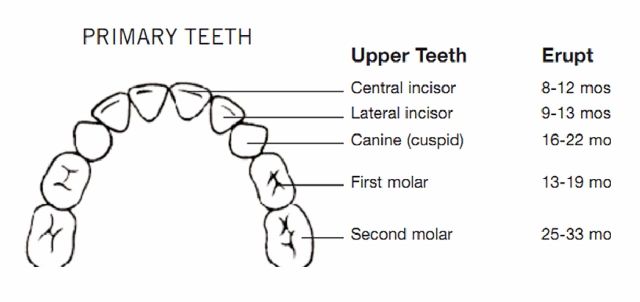1. When my child need to visit a dentist?
2. Why should we restore the primary dentition?
4. Why does my child grind her teeth at night?
5. Do I Need Braces? When? Why?
7. What is baby tooth root canal treatment?
1. When my child need to visit a dentist?
The American Academy of Pediatric Dentistry suggests that a child first be seen by a dentist when the first baby tooth erupts, or by the age of one year. While the child will not yet have all of his or her baby teeth in place by the age of one, a visual inspection allows the dentist to assess for the beginning of early childhood decay (nursing bottle caries) and to council the parents on any obvious problems that appear to be developing. It also creates a record for the child and the parents. At this time, the parents will get the education for their child dental care.
2. Why should we restore the primary dentition?
Restore teeth form
Restore aesthetics, especially front teeth.
Restore function (back teeth -mastication, and front teeth- speech).
Maintain space for the permanent teeth ( under each baby tooth, has adult tooth for replacement).
Avoid pain and sepsis -avoid damage the permanent teeth
Avoid extraction, particularly under general anaesthesia ( due to the patient’s age and behave, and not operate under regular local anaesthesia).
Avoid heart disease ( caries infection bacteria is same species with heart disease).
3. When the teeth will erupt? 4. Why does my child grind her teeth at night? It is normal for children under the age of about 13 to grind their teeth at night. It appears to serve two purposes. 1. Grinding places pressure on the roots of the baby teeth over the developing adult teeth which stimulates resorption (natural destruction) of the roots of the baby teeth. This resorption is ultimately responsible for the shedding of the baby teeth when the adult teeth are ready to erupt. 2. Grinding also helps the adult teeth to erupt into their most stable positions in the dental arches. 5. Do I Need Braces? When? Why? The American Association of Orthodontists (AAO) recommends that children should be seen for their first orthodontic consultation no later than age 7. While the age of 7 may seem unusually early to consider braces, this pre-screening will give the orthodontist the opportunity to use preventative measures to possibly correct situations that may lead to braces in the future, and /or advise the parent on future orthodontic treatment planning. Adults seeking orthodontic treatment may consult with their dentist at any time, since it is never too late to consider correcting your teeth. While some patients may have the ideal bite, they may suffer from varying degrees of crowding or spacing, another factor associated with a misaligned bite. Crowding is a condition that causes the teeth to overlap, rotate, and in some cases, grow into the incorrect position in the mouth, or in more extreme cases, cause the tooth to become trapped in the bone. Crowding may be caused because the dental arch is too small for the adult teeth, or the adult teeth are larger than normal. Crowding may also be caused by losing the primary or baby teeth early, or retaining them in the mouth longer than normal. These factors may inhibit the adult tooth, forcing it to erupt or grow into an incorrect position. Crowding makes it difficult to brush and floss the teeth correctly, possibly resulting in tooth decay or gingivitis. Misaligned teeth and an incorrect bite may affect more than just the appearance of your smile. The following conditions may potentially be corrected by orthodontics: 6. What is space maintainer? Space maintainers are appliances made of metal or plastic that are custom fit to the child's mouth and maintain the space of the lost teeth, children easily adjust to them after the few days. Space maintainers hold open the empty space left by a lost tooth. They prevent movement of the remaining teeth until the permanent tooth start erupting in the mouth. It's affordable and it is an easy way to keep teeth in normal positions rather than having extensive orthodontic treatment in the future. 7. What is baby tooth root canal treatment? Usually root canals are not done on baby teeth. If a big cavity has reached the pulp of a baby tooth, a pulp treatement is then indicated .( The pulp contains the tooth's nerve. It also contains blood vessels that give the tooth oxygen and nutrients.) This treatment means cleaning part of the nerve in the pulp, putting medication inside and then restauring the tooth with either a filling or a stainless steel crown. If your child's baby tooth in question has is not moving and is not do to fall out soon on its own, then you are very advised to repair it with pulp treatment. If you extract a baby tooth too soon, you will get two complications: 




1- The adult tooth underneath will erupt much later.
2- The other teeth will shift and come forward, leaving less space for the remaining teeth, which will cause a malocclusion.
